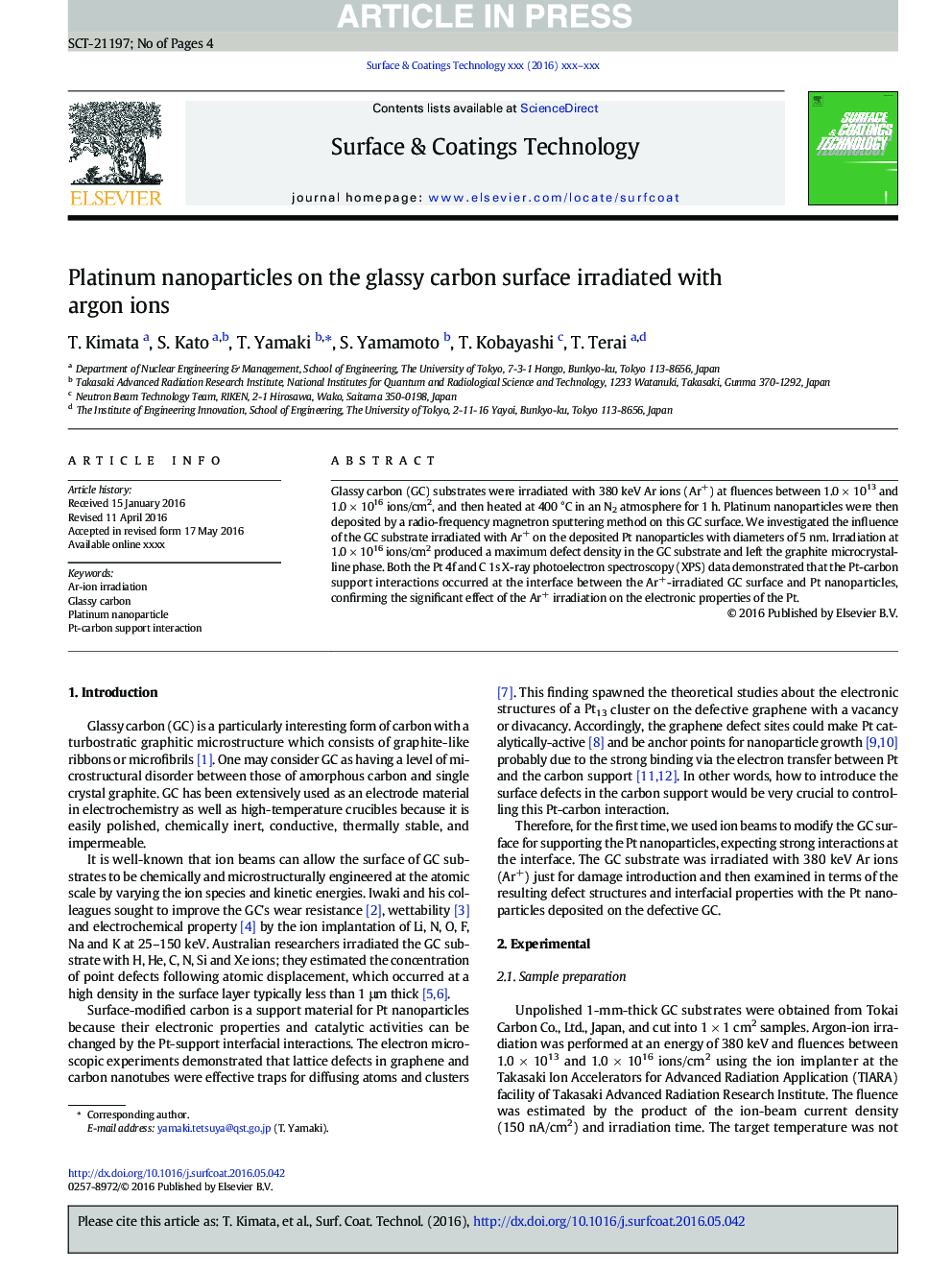| Article ID | Journal | Published Year | Pages | File Type |
|---|---|---|---|---|
| 5465181 | Surface and Coatings Technology | 2016 | 4 Pages |
Abstract
Glassy carbon (GC) substrates were irradiated with 380 keV Ar ions (Ar+) at fluences between 1.0 Ã 1013 and 1.0 Ã 1016 ions/cm2, and then heated at 400 °C in an N2 atmosphere for 1 h. Platinum nanoparticles were then deposited by a radio-frequency magnetron sputtering method on this GC surface. We investigated the influence of the GC substrate irradiated with Ar+ on the deposited Pt nanoparticles with diameters of 5 nm. Irradiation at 1.0 Ã 1016 ions/cm2 produced a maximum defect density in the GC substrate and left the graphite microcrystalline phase. Both the Pt 4f and C 1s X-ray photoelectron spectroscopy (XPS) data demonstrated that the Pt-carbon support interactions occurred at the interface between the Ar+-irradiated GC surface and Pt nanoparticles, confirming the significant effect of the Ar+ irradiation on the electronic properties of the Pt.
Keywords
Related Topics
Physical Sciences and Engineering
Materials Science
Nanotechnology
Authors
T. Kimata, S. Kato, T. Yamaki, S. Yamamoto, T. Kobayashi, T. Terai,
